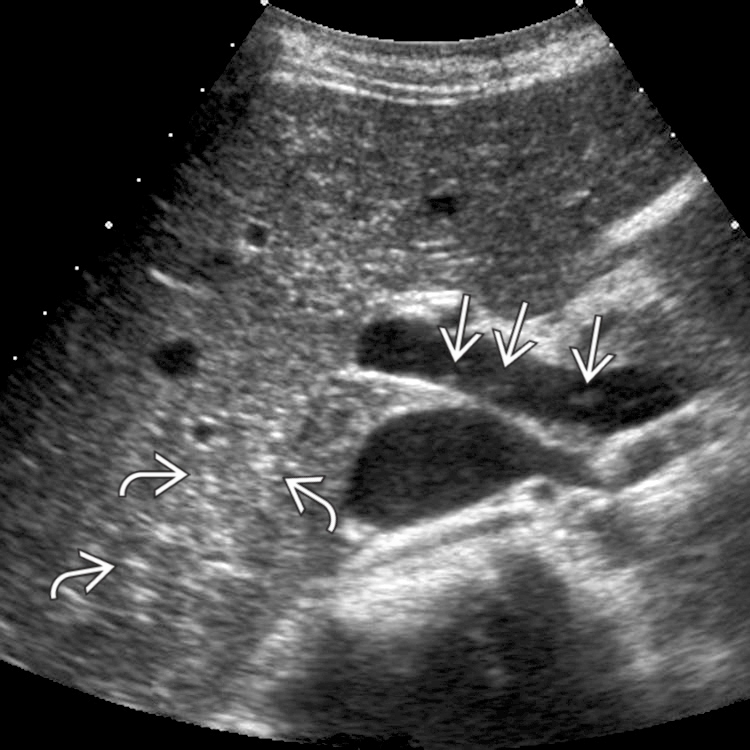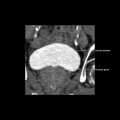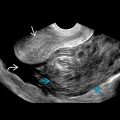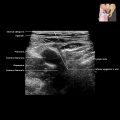KEY FACTS
Terminology
- •
Gas within portal venous system
Imaging
- •
Grayscale ultrasound
- ○
Highly reflective foci in portal venous system
- –
Move along with blood
- –
- ○
Poorly defined, highly reflective parenchymal foci
- –
Scattered small patches to numerous or large areas
- –
- ○
- •
Pulsed Doppler ultrasound
- ○
High-intensity transient signals (HITS)
- –
Strong transient spikes superimposed on portal venous flow pattern
- –
- ○
- •
Color Doppler ultrasound
- ○
Bright reflectors in portal venous system
- ○
Top Differential Diagnoses
- •
Biliary tract gas
- •
Parenchymal abscess
- •
Biliary calculi/parenchymal calcifications
- •
Hepatic artery calcification
Pathology
- •
Sources of gas: Gas under pressure, intravasation from mucosa, gas-forming organism
- •
Serious conditions
- ○
Necrotizing enterocolitis, bowel ischemia/infarction
- ○
- •
Benign conditions
- ○
Bowel distension, intervention-related, benign pneumatosis intestinalis
- ○
Clinical Issues
- •
Often sign of serious condition; but can sometimes be inconsequential finding
Diagnostic Checklist
- •
Rule out other conditions mimicking portal venous gas
- ○
Biliary tract gas, biliary calculi, or hepatic calcification
- ○
- •
Best imaging clue: Bright reflectors in portal veins on grayscale or color Doppler
Scanning Tips
- •
To distinguish rouleaux formation in slow-flow veins from gas bubbles, use spectral tracings, which will detect HITs that correspond to gas
- •
With B-flow imaging, portal venous gas may be more clearly delineated
 representing gas bubbles. Brightly echogenic patches
representing gas bubbles. Brightly echogenic patches  in the liver more peripherally represent parenchymal gas.
in the liver more peripherally represent parenchymal gas.










